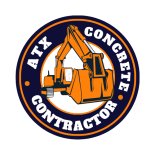Concrete cutting is a crucial process in construction and renovation projects, wielding significant impact on the structural integrity, aesthetics, and functionality of a building or infrastructure. Whether it’s for remodeling, repair, or expansion, understanding the nuances of concrete cutting can be the key to achieving successful outcomes. In this comprehensive guide, we delve into the intricacies of concrete cutting, exploring its various types, methods, applications, and the importance of precision in every cut.
Types of Concrete Cutting
Flat Sawing (Slab Sawing): Ideal for horizontal surfaces such as floors, bridges, or pavements, flat sawing uses a diamond-bladed saw to cut through concrete. Its applications range from creating expansion joints to precise removal of damaged sections without affecting surrounding areas. Additionally, it facilitates the installation of plumbing lines or electrical conduits by carving channels or openings.
Wall Sawing: Designed for vertical or inclined surfaces like walls, this method uses a specialized saw on a track system for precise cuts. It’s perfect for creating openings in concrete walls for doors, windows, or vents, and it allows modifications without compromising structural stability.
Core Drilling: Used for creating precise circular holes, core drilling employs a hollow drill to produce clean and accurate holes in concrete surfaces. Its applications range from installing utilities like plumbing lines and electrical conduits to obtaining test cores for structural assessments.
Wire Sawing: Primarily used for cutting massive or heavily reinforced concrete, wire sawing employs diamond wire threaded through pulleys. It’s crucial for demolishing large structures where conventional methods might be inefficient and for precision cutting in underwater scenarios for marine construction or repair projects.
Each method is tailored to specific needs, ensuring clean, precise, and efficient solutions for various concrete cutting requirements in construction and demolition projects.
When Concrete Cutting Makes a Difference:
Precision cutting isn’t just about accuracy; it’s about preserving the structural integrity of a building or infrastructure. By making precise cuts, the risk of unintended damage to surrounding structures is minimized. This is especially critical in load-bearing walls or sections where any structural compromise could have far-reaching consequences. For example, during renovations, precise cuts ensure that load-bearing walls remain intact while modifications are made.
Accurate cuts significantly reduce the risk of accidents on-site. When concrete cutting is done precisely, there’s a reduced likelihood of sudden collapses or unexpected damage, creating a safer environment for workers. Additionally, precise cuts minimize the release of harmful dust particles, enhancing air quality and reducing health hazards for workers and bystanders.
The aesthetics of a construction project are often overlooked in discussions about concrete cutting. However, precise cuts contribute significantly to the overall visual appeal of a structure. Whether it’s creating clean edges for door or window openings or ensuring straight and seamless joints, precise cuts enhance the professionalism and attractiveness of the finished project.
Precise cuts streamline construction processes by minimizing the need for rework or corrections. This not only saves time but also optimizes resource allocation. With accurate initial cuts, subsequent steps in construction, such as installations or modifications, proceed more smoothly, reducing overall project timelines.
Factors Affecting Concrete Cutting
The quality of equipment used in concrete cutting plays a pivotal role in achieving precision. High-quality tools and machinery equipped with advanced features, such as diamond-tipped blades or high-powered drills, ensure cleaner and more accurate cuts. Regular maintenance and calibration of these tools are also crucial to maintain their efficiency and precision.
Skilled operators are essential for precise and safe concrete cutting. They possess the technical know-how to handle different types of cutting equipment, understand the nuances of varying concrete compositions, and can adjust cutting techniques accordingly. Their experience allows them to anticipate challenges and execute cuts with precision, minimizing errors or mishaps.
Site conditions encompass various environmental and logistical factors. Weather conditions, such as extreme temperatures or humidity, can affect the concrete’s properties, impacting the cutting process. Access to the site and the surrounding area also influences the efficiency of concrete cutting. Additionally, site conditions might necessitate adaptations in techniques or equipment to ensure precision amidst challenging environments.
Conclusion
In the realm of construction, the art of concrete cutting stands as a testament to precision and expertise. Understanding the nuances of different cutting methods unveils their profound impact on the very fabric of a structure. From preserving structural integrity to ensuring safety, aesthetics, and efficiency, the careful orchestration of concrete cutting techniques defines the success of any construction or renovation endeavor. By knowing the right cuts and employing them with precision, builders and renovators not only craft functional spaces but also elevate the standards of safety, aesthetics, and efficiency in every stroke.
